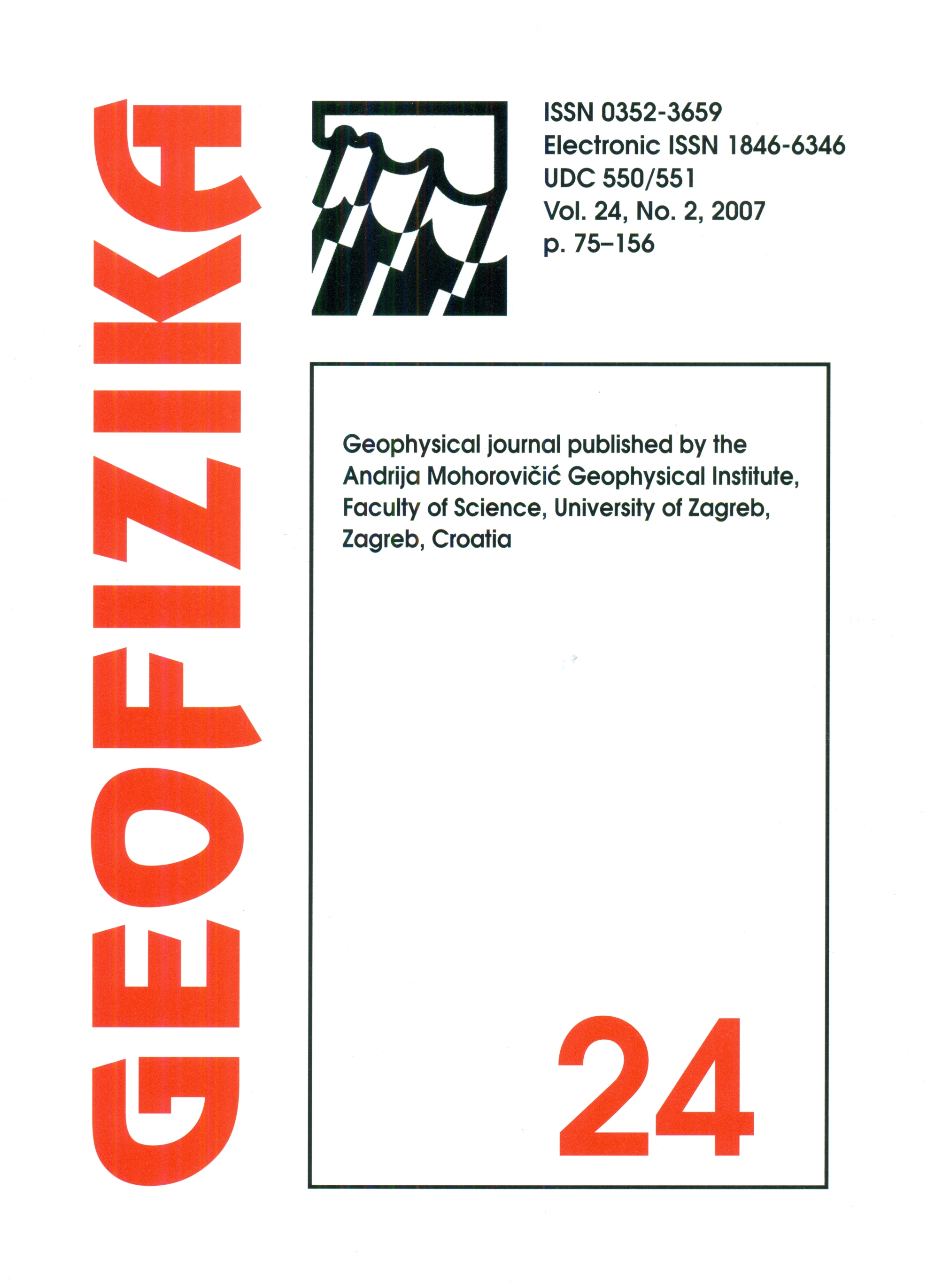Influence of weather types on concentrations of metallic components in airborne PM10 in Zagreb
Keywords:
PM10, lead, manganese, cadmium, local sources, long-range transportAbstract
This study investigates the influence of weather types found over the continental part of Croatia on daily PM10 concentrations and concentrations of metallic compounds in PM10 (namely manganese, lead and cadmium) in air during 2000–2002 period. Pollutant concentrations were measured at the northern, residential part of Zagreb, far from major pollution sources. Weather types were determined from synoptic charts. In the employed categorization six different patterns were recognized: radiation weather type, high pressure ridge, precipitation weather type, southeastern advection, northeastern advection and wind weather type. The most frequently, elevated concentrations were related to radiation weather type and southeastern advection, while the lowest concentrations were recorded during the wind weather type. Obtained results generally suggest a major role of the local pollution sources, and particularly of the Zagreb industrial zone, in suspended particles/metallic compounds pollution. Since cadmium exhibits somewhat different behavior, the role of the long-range transport in cadmium pollution needs to be further investigated. Synoptic conditions favorable for elevated concentrations occurred in about 37% of investigated days. Typically, these conditions are characterized by 1) the weak winds and turbulence, and consequently, inefficient pollutant concentration dilution (the nighttime and wintertime radiative conditions); or 2) southeastern airflow (southeastern advection and daytime radiative conditions), which transports pollutants from industrial zone of Zagreb towards the measuring site. Due to the latter, particulate pollutants emitted in the industrial zone pass rather frequently above the eastern part of Zagreb.
Downloads
Published
Issue
Section
License
Copyright (c) 2021 Geofizika journal

This work is licensed under a Creative Commons Attribution-NonCommercial 4.0 International License.

